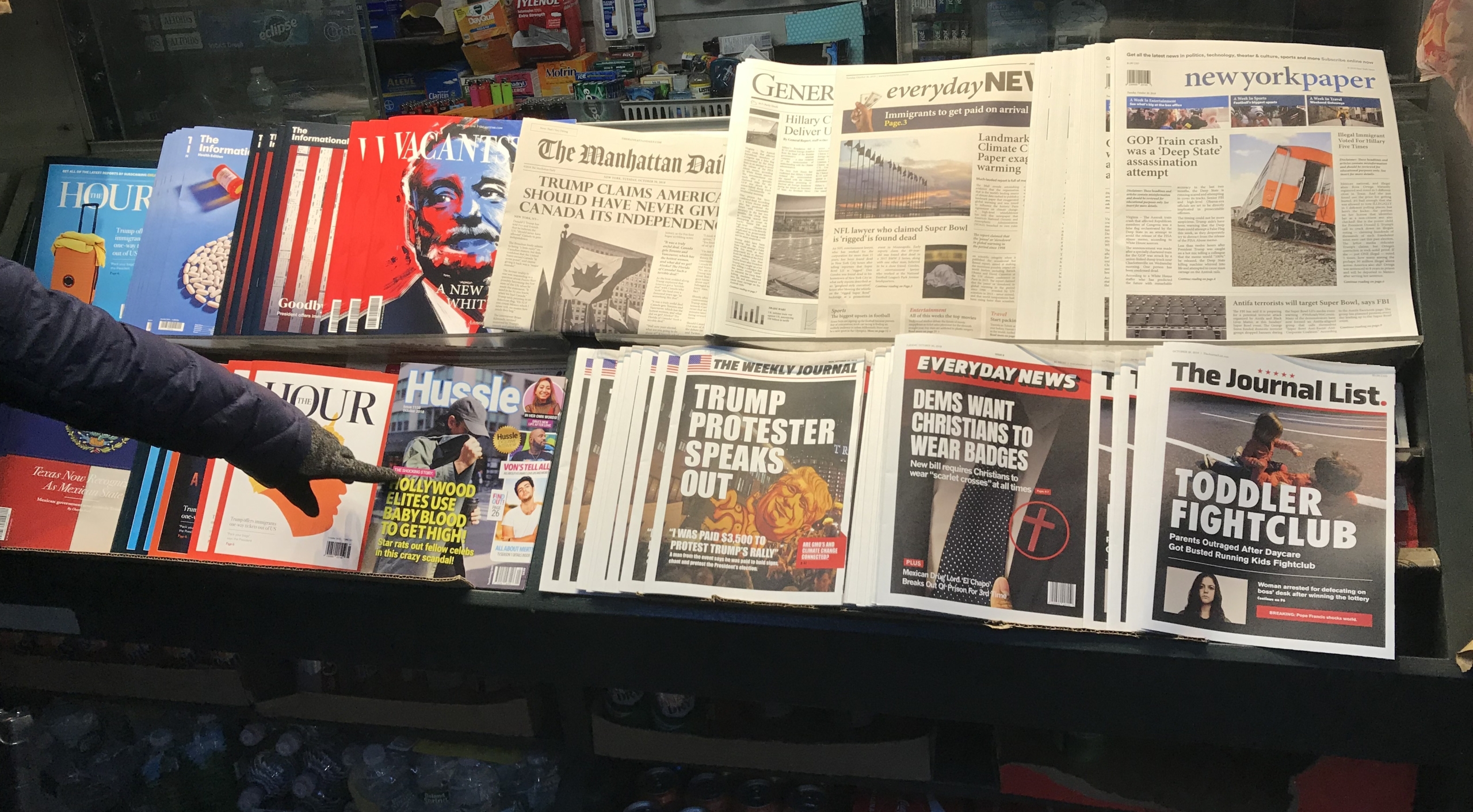Earlier this month, CJR embarked on an experiment to convince people to take responsibility for the news they consume: we set up a newsstand in the middle of New York City, took out the real publications, and replaced them with fake titles featuring misinformation pulled from the internet. Then, we sat back and watched how people responded.
You can watch a video of our experiment here:
First, a bit of background on why we did this. For months, we’ve been frustrated by the rise of misinformation and the seeming inability of the big tech platforms to do anything about it. Now, I’ve become convinced that it’s not so much they can’t address the problem, but that they have simply decided it doesn’t fit their business model. But as the news business has tried to shame Facebook and Twitter to address the problem, that problem has only grown, and its effects become more ominous—from the tides of misinformation consumed by the people behind the mailing of pipe bombs and the massacre at a synagogue in the US to the spreading of lies on WhatsApp in the runup to the presidential election in Brazil.
The news audience consumes bad information on the same platforms it encounters real journalism, and the fear is that people are having increasing difficulty differentiating the two.
In this fight, real journalism is outgunned. The tedious, time-consuming business of fact-checking and documenting misinformation is dramatically slower, and its dwarfed in size, by the bad information journalism is trying to correct.
So the onus has to be on our audience to take some responsibility for what they watch and read. Our readers, watchers, and listeners have to be the first line of misinformation defense.
That was the principle behind starting the newsstand, which we located outside of Bryant Park in Midtown Manhattan. Working with TBWA/Chiat/Day, the ad agency, we stocked the newsstand with publications that at first glance seemed real enough, but whose headlines were absurd. “Trump claims America should have never given Canada its independence,” reads one; “Texas now recognized as Mexican state,” asserts another. (My favorite: “Toddler fight club: Parents outraged after daycare got busted running kids fight club.”) They’re ridiculous in part because they’re pulled out of the dark reaches of the internet and made tangible—something you can hold in your hands. Seeing fake news transformed into what could be a real publication on a real newsstand makes us confront the nature of what we’re spreading.
Our hope was that this one-day project would prompt all of us to be more thoughtful, and more careful, about the news and information we are seeing and sharing. All of the false titles we produced contained inserts to instruct people on how to recognize misinformation and, by contrast, to see the importance of real news produced by real journalists.
So what did our experiment show? First, it was notable how many people slowed down, read the ridiculous headlines, and kept walking, assuming they were real. That was an unexpected, but telling, commentary on the news environment we live in.
A handful of supporters of President Trump stopped to say that all news is fake, anyway.
But the majority of people who engaged in the project did so thoughtfully, and were taken aback by the fact that the ridiculous publications we had mocked up were widely shared online. Most said the experiment forced them to think about the news, which was the point.
And that is the challenge that this project has posed for all of us: think more carefully about the news you consume and where it comes from. Spend a moment figuring out where the information comes from. And seek out, amid all the noise, real journalism and real facts, as small and as slow as they have become.
Kyle Pope was the editor in chief and publisher of the Columbia Journalism Review. He is now executive director of strategic initiatives at Covering Climate Now.

